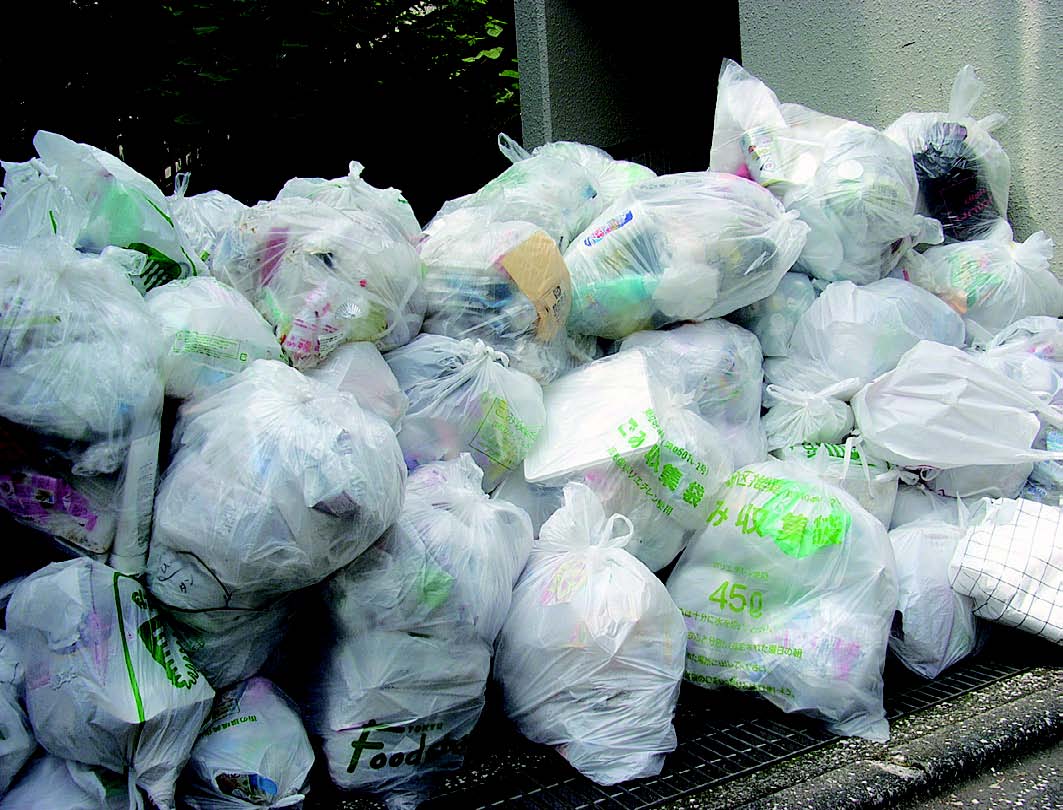by Danielle Rippinggale
In an attempt to minimize the devastating impact that plastic bags have on the environment, more and more cities around the world are introducing bans or taxes. In 2002, Ireland was one of the first to impose a tax, resulting in a 94 percent reduction in disposable plastic bag use within weeks. Despite initial resistance by shop owners, Ireland’s conversion to canvas is a stellar example of a positive behavioral shift among consumers—so much so that the use of plastic bags has become socially frowned upon.
Arguably the most common complaint among the eco-minded in Japan is excessive plastic packaging. In Japan, plastic bags are closely tied with traditional attitudes towards gift giving, in which the layers of wrapping have social meanings. The content is almost secondary to the presentation, and more wrapping means more formality, respect, and politeness. Sadly, bags are so cheap that there is little incentive to reduce or recycle.
Perhaps ironically, most quality retailers in Japan use luxury paper bags as a way of adding care and value to purchases. There is a common perception worldwide that paper bags are better than plastic because they are derived from a natural source (trees).
Unfortunately, it is not that simple when the entire life cycle of the bag is considered. Being biodegradable, paper bags may fare better at the end of cycle, but many studies suggest that the clear cutting of millions trees (many from endangered forests, visit www.forestethics.org), the energy used, and greenhouse gases released extol a higher cost to the environment than plastic bags. In fact, the production of each paper bag consumes one gallon of water (50 times that of plastic).
However, plastic bags are made of petroleum (a non-renewable natural resource) and do not biodegrade. They photodegrade, which means they break down into small pieces which contaminate soil and waterways, and kill land and aquatic animals that accidentally ingest them. In fact, plastic is the most prevalent litter found along the coastline of Japan, representing 76.2 percent, or 411 pieces of marine litter for every 100 meters.
On the positive side, the life cycle of plastic means that it is reused more than paper bags (eg. as garbage can liners). Japan may be the exception to this trend—the luxury paper bags offer a sturdy and attractive tote option that encourages people to reuse them. Unfortunately, the recycling of both paper and plastic bags at the end of the life cycle tends to be extremely low (less than eight percent). Furthermore, bioplastics are quickly gaining criticism as they contribute to the global food crisis, confuse consumers, and still exact a significant environmental toll.
One thing is clear—both paper and plastic, when used by the billions, have a substantial environmental impact. We can’t forget that the first and most important of the three Rs is REDUCE, and that means saying no to packaging and carrying your own reusable bag.
Released this year, the results of a nationwide survey by Japan’s Ministry of the Environment indicate that 80 percent of prefectures and 40 percent of municipalities have implemented schemes to reduce the use of plastic shopping bags. Among them, Toyama and Okinawa have taken a step towards ending the free distribution of plastic shopping bags by introducing a ¥5 charge per bag. Steps are also being taken by big companies wishing to promote environmental responsibility. For example, Seiyu Supermarkets offer a ¥2 refund to customers who bring their own bags.
When buying a reusable bag, consider buying one that is made from recycled material if you can. There are many creative recycled totes on the market, such as bags from the Philippines made of recycled juice boxes. I’ve seen a crafty Tokyo woman make bags out of discarded umbrella material, and of course don’t forget Japan’s own wrapping cloth, the furoshiki.
ECO FACT:
Japanese consumers use approximately 30 billion plastic bags annually (which translates to about 300 per person), and the equivalent of 420,000 kiloliters of oil.
GREEN GLOSSARY
Bioplastics: A new generation of biodegradable and compostable plastics that are derived from renewable raw materials like starch (e.g. corn), cellulose, soy protein, lactic acid, etc. They are not hazardous in production, and decompose back into carbon dioxide, water, biomass, etc. when discarded.









